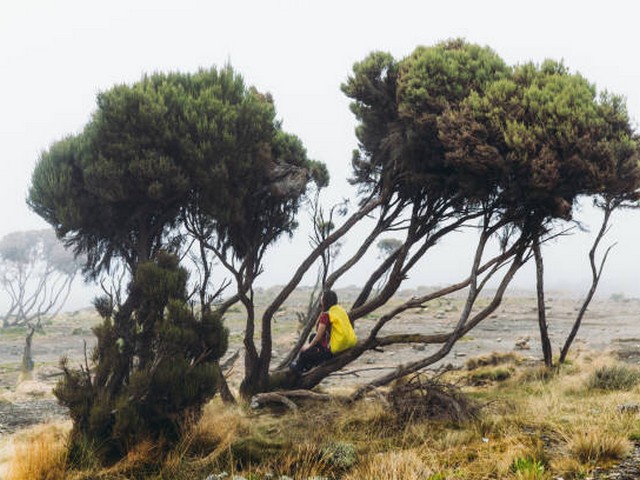How To Capture Night Sky Photos On Kilimanjaro
Experience the Universe from the Roof of Africa
Have you ever gazed up at the night sky and felt the indescribable pull of the universe? Now, imagine experiencing this stellar spectacle from the lofty heights of Mount Kilimanjaro. There’s nothing quite like capturing the ethereal beauty of the cosmos, framed by the silhouette of Africa’s highest peak. At Kilimanjaro Centre for Trekking and Ecotourism (KCTE), we specialize not only in guiding adventurers to the summit but also in helping them capture the celestial magic of the Kilimanjaro nightscape. In this guide, we’ll walk you through the enchanting journey of night sky photography on this iconic mountain.
Why Kilimanjaro Offers the Ultimate Sky-Gazing Canvas
A Celestial Phenomenon at 19,341 Feet
Mount Kilimanjaro, standing majestically at 19,341 feet, offers a unique vantage point above much of the Earth’s atmosphere. This elevation minimizes light pollution and presents an unobstructed view of the milky way and beyond, making it a photographer’s paradise. The crisp, clear air at this altitude allows for sharper images of the night sky, capturing details that are often lost in lower, hazier conditions.
Variety of Landscapes
From the lush rainforests at its base to the arid expanse of the summit, Kilimanjaro offers a variety of dramatic backgrounds against which the universe reveals its splendor. These diverse settings not only add depth to your photography but also tell a story of ascent from the earthly to the celestial.
Gear Up: Essentials for Night Sky Photography on Kilimanjaro
Choosing the Right Equipment
To ensure that your night sky photography captures the breathtaking clarity and colors of the cosmos, investing in the right gear is crucial:
- Camera: A DSLR or mirrorless camera capable of manual settings is ideal.
- Wide-Angle Lens: Opt for a lens with a wide aperture (f/2.8 or wider) to capture as much light as possible.
- Tripod: A sturdy tripod is essential to stabilize your camera for long exposures.
- Remote Shutter Release: This helps prevent any camera shake when pressing the shutter button.
Power and Storage Solutions
Given the remote nature of an expedition up Kilimanjaro, ensure you bring extra batteries and memory cards. Batteries can lose charge quickly in cold conditions, so keep them warm, perhaps in an inner pocket near your body, until needed.
Techniques for Stellar Night Sky Photography
Mastering Camera Settings
- Focus: Set your lens to manual focus and adjust to infinity. Test this during the day to ensure sharp focus.
- Aperture: Set to the widest setting (lowest f-number) to allow the maximum amount of light.
- Shutter Speed: Start with a 20-second exposure and adjust as needed. Longer exposures will capture more light but can cause stars to blur as the Earth rotates.
- ISO: Begin at ISO 1600. Higher ISOs can introduce noise, so increase only if necessary.
Composition Tips
- Foreground Interest: Use the silhouette of Kilimanjaro or include climbers in your frame for scale and intrigue.
- Rule of Thirds: Position the horizon along the bottom or top third of your frame to create a balanced composition.
- Experiment: Try different angles and compositions to capture unique perspectives of the night sky.
Best Time and Places on Kilimanjaro for Night Sky Photos
Timing Your Shot
To capture the Milky Way in all its glory, aim for a new moon phase, when the sky is darkest. The dry seasons, from late June to October and from late December to early March, offer clearer skies.
Prime Locations
- Shira Plateau: Offers expansive views of the sky with minimal obstructions.
- Baranco Camp: The iconic Baranco Wall provides a dramatic foreground.
- Uhuru Peak: For the ambitious, a pre-dawn shoot at the summit can capture sunrise and the night sky simultaneously.
Join Us at KCTE
At Kilimanjaro Centre for Trekking and Ecotourism, we are passionate about creating unforgettable experiences. Not only do we provide expert guides for your climb, but we also offer workshops on photography, helping you capture the awe-inspiring beauty of Kilimanjaro’s night sky. Ready to embark on this once-in-a-lifetime adventure and bring home stellar photographs? Book your Kilimanjaro climb with KCTE today.
FAQs About Night Sky Photography on Kilimanjaro
Q: Do I need any special permits for photography on Kilimanjaro?
A: No special permits are required for photography for personal use. However, commercial photographers should check for necessary permissions.
Q: What’s the best season for night sky photography on Kilimanjaro?
A: The dry seasons, particularly the periods from June to October and from December to March, offer the clearest skies for photography.
Q: How can I prepare physically for night photography on the mountain?
A: Nighttime temperatures can be very low, and the trek itself is demanding. Ensure you are well-prepared physically and have the necessary gear to stay warm and comfortable.
Q: Can beginners in photography join your tours?
A: Absolutely! We cater to photographers of all skill levels and provide guidance to help you capture the best possible shots.
Capture the Cosmos
Climbing Kilimanjaro is a dream for many, and capturing its night sky is like framing a celestial masterpiece. With the right preparation, equipment, and timing, you can take home not just memories but stellar panoramas of the night sky from the highest point in Africa. Join us at KCTE, where your dream climb and photography adventure await. Let’s ascend to the stars together!




